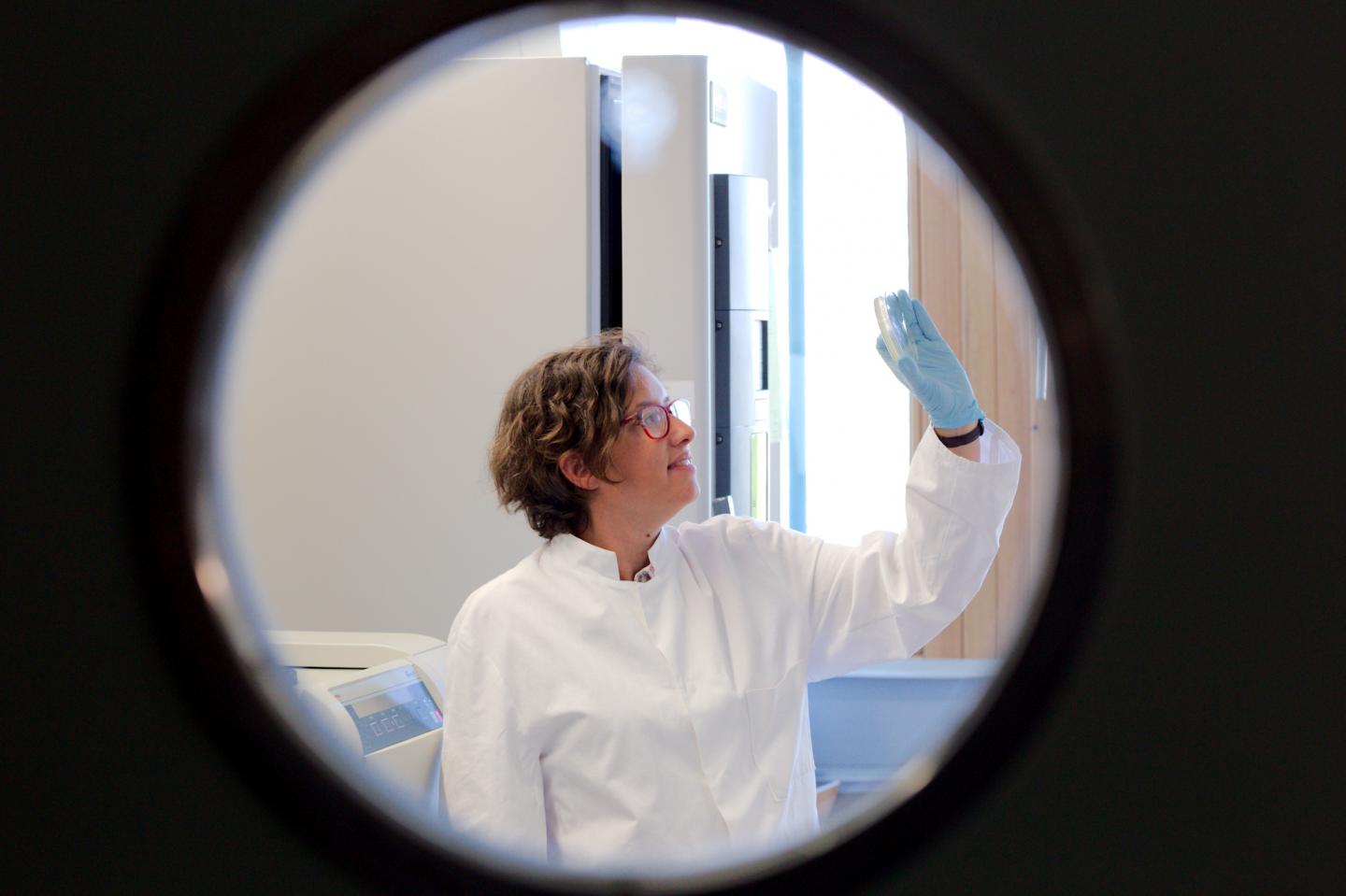
Credit: Joerg Fuchs
Bacteria have fascinating properties. They adapt excellently to their respective environment, and they existed long before humans. Their toughness has led to the fact that bacteria have successfully spread all over the world for three billion years – even in places where humans could not survive, for example in the hottest springs and in the coldest places on earth. However, they were only discovered a few hundred years ago. Since that time, research has been examining these tiny creatures more and more closely.
Biotechnology engineer Dr. Ana Rita Brochado has also taken a liking to microbes. She has been setting up an Emmy Noether Junior Research Group at the Biocenter of Julius-Maximilians-Universität Würzburg (JMU) in Bavaria, Germany, since early 2019. Her topic: “Systems Biology of Antibiotics in Gram-negatives.”
Dr. Brochado is funded by the JMU Biocenter Nachwuchsprogramm, by the ZINF Young Investigator program and by the German Research Foundation (DFG). The Emmy Noether Programme by DFG offers outstanding young researchers the opportunity to lead junior research groups on their own responsibility and thus qualify for a professorship. The DFG will provide Brochado with up to 1,82 million euros for her group.
Gram-negative bacteria at a glance
Dr. Brochado is interested in bacterial pathogens. “Bacteria are very small but extremely tough creatures. They use complex mechanisms to cope with their environmental conditions,” said the researcher. This can lead to problems if they infect humans. “Mutations can quickly make bacteria resistant to antibiotics that will no longer work,” she explains. “The weapons with which medicine fights bacterial infections quickly become dull. New strategies are permanently in demand.”
Her research focuses particularly on gram-negative bacteria. These are infectious agents which are particularly difficult to treat, due to the complex structure of their cellular envelope: in addition to the cell wall, they have an external biomembrane that makes them very resistant to external compounds, such as antibiotics.
Reviving old antibiotics with vanilla against pathogens
Ana Rita Brochado and her group are investigating the molecular mechanisms underlying antibiotic activity using a systems biology approach. “It is not the case that bacteria simply die when they come into contact with an antibiotic,” she explains, “in this process numerous mechanisms are set in motion. We will use different compounds alone and in combination to better understand the complexity of the bacterial response to these compounds.”
Among other things, the scientist showed that different bacteria react in a very specific manner to antibiotic combinations, and also that food compounds can be used to enhance the activity of antibiotics against resistant bacteria. For instance, particular clinical isolates of Escherichia coli which are resistant to the antibiotic spectinomycin could be successfully combated by combining the antibiotic with the aroma substance vanillin (Brochado et al., Nature, 2018). Vanillin is the major component of vanilla flavor.
Career of the junior research group leader
Ana Rita Brochado has completed several research stations in Europe. She obtained her Master’s degree in Biotechnology Engineering in her native Portugal at the Instituto Superior Técnico in Lisbon. She received her PhD from the Technical University of Denmark in Lyngby in 2012 with a thesis modelling of yeast metabolism.
She then moved to Germany, where she did postdoctoral research at the group of Dr. Athanasios Typas at the European Molecular Biology Laboratory (EMBL) in Heidelberg until the end of 2018. During her postdoc, she became interested in antibiotic action and developed high-throughput approaches to study antibiotic combinations in bacteria.
Ana Rita Brochado moved from EMBL to JMU Würzburg at the beginning of 2019. Here she is setting up her Emmy Noether Junior Research Group at the Chair of Microbiology at the Biocenter. She does not only want to cooperate with Professor Thomas Rudel, who holds the chair, but also with other groups: “I am particularly interested in quantitative biology and biology of infection. Thanks to its well-connected research landscape, JMU offers me the best conditions to carry out combined basic research in these fields.”
But that’s not all. “Of course, we want to make our findings useful for patient care,” said Brochado. “To do this, many research teams have to work together to successfully transfer research results from the laboratory into clinical studies. I see excellent opportunities for this in Würzburg.”
Long research tradition in Würzburg
She is not alone with this assessment. Würzburg has a long and successful tradition in the research of bacteria. As early as 1880, the physician Theodor Escherich discovered a bacterium in the human intestine in Würzburg that was named after him – Escherichia coli.
Even today, Würzburg is an outstanding supra-regional location for bacterial research. Founded in 1993, the ZINF Research Center for Infectious Diseases of JMU – which Ana Rita Brochado is also a member as a Young Investigator – is the oldest university institution in Germany dedicated to the interdisciplinary and cross-faculty research of infectious diseases. The Helmholtz Institute for RNA-based Infection Research, founded in 2017, is also of particular importance. The subsidiary institute of the Braunschweig Helmholtz Centre – Germany’s largest institution for infection research – works and conducts research within the framework of a strategic partnership with the JMU.
###
Media Contact
Dr. Ana Rita Brochado
[email protected]
Original Source
https:/




